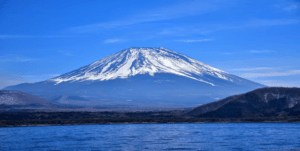Mount Fuji’s Snowy Crown Delayed: Climate Change Takes Toll on Iconic Peak
Mount Fuji, Japan’s iconic peak, is experiencing its latest snowfall delay in 130 years. The absence of snow, a result of unusually warm temperatures, highlights the impact of climate change on natural landmarks. This delay not only affects the mountain’s aesthetic beauty but also raises concerns about the broader implications of global warming on weather patterns and ecosystems.
CONTENTS:

Mount Fuji’s Snowy Crown Delayed: Climate Change Takes Toll on Iconic Peak
Climate Change Threatens Mount Fuji’s Snowfall
Mount Fuji’s Snowy Crown Delayed: Climate Change Mount Fuji, Japan’s renowned peak, is making headlines this November for being snowless, marking the latest date for snow accumulation in 130 years of recorded history. This unusual condition raises concerns about the effects of rising temperatures and shifting weather patterns, particularly following one of Japan’s hottest summers on record. The lack of snow not only changes the landscape but also emphasizes the broader implications of climate change on both natural and cultural heritage.
Japan experienced one of its warmest summers, with average temperatures soaring 1.76°C above the norm. This warm trend persisted into September, largely due to the position of the subtropical jet stream, which brought in warmer air from the south and hindered the colder conditions necessary for snow to form on Mount Fuji. In September alone, Japan recorded nearly 1,500 “extremely hot” days, with temperatures reaching or exceeding 35°C (95°F). Although temperatures eased slightly in October, they have remained above average, further postponing snowfall on Mount Fuji.
The previous record for the latest snowfall was October 26, set in both 1955 and 2016. While climate change cannot be definitively attributed to individual weather events, the current absence of snowfall aligns with broader climate predictions, raising alarm about the impacts of global warming on weather patterns.
Standing at 3,776 meters (12,460 feet), Mount Fuji is not only Japan’s tallest mountain but also a cultural symbol celebrated in countless artworks. Typically, over 220,000 hikers attempt to reach its summit during the peak season from July to September.
However, this year saw a decline in climbers due to new regulations aimed at managing overtourism, including entry fees and visitor number caps. These developments highlight the significant effects of climate trends on natural landmarks like Mount Fuji and underscore the ongoing challenges of balancing tourism with environmental sustainability. As conditions evolve, it is crucial to address the interplay between human activity and climate health to ensure the preservation of such iconic sites for future generations.
Mount Fuji’s Snowfall Delayed by Warm Weather
Mount Fuji’s Snowy Crown Delayed: Climate Change Japan’s iconic Mount Fuji has set a new record for the latest snowfall delay since record-keeping began in 1894, remaining snowless this November. Typically, the summit of the 3,776-meter active volcano, located 100 kilometers southwest of Tokyo, receives snow by early October, but unusually warm weather has delayed this year’s snow accumulation, as reported by the Japan Meteorological Agency.
Mount Fuji, revered as one of Japan’s Three Holy Mountains, has been a pilgrimage destination and a hiking spot for centuries. On average, its snowcap forms around October 2, with the first snowfall typically detected by October 5. Historical observations by the Kofu branch of the Japan Meteorological Agency in Yamanashi Prefecture indicate that the snowcap often appeared in September. However, since World War II, there has been a noticeable trend toward later snowfalls, with the latest recorded dates being October 23 in 1961, 1969, and 2017.
As of October 29, 2024, Mount Fuji had not yet received any snow, breaking the previous latest snowfall record of October 26, set in both 1955 and 2016, according to The Guardian. Snow-forecasting website snow-forecast.com predicts snow on the peak by November 6. Yutaka Katsuta, a forecaster at the Kofu Local Meteorological Office, noted that the high temperatures resulting from one of Japan’s hottest summers have disrupted the usual conditions needed for snow formation. He indicated that climate change could also play a role in the delay.
While October temperatures slightly eased, they remained above average, likely due to the subtropical jet stream’s more northerly position, which allowed warmer air from the south to flow over Japan, according to BBC reports. The Japan Meteorological Agency noted that between June and August, temperatures were 1.76 degrees Celsius higher than usual, with nearly 1,500 locations experiencing “extremely hot” days exceeding 35°C in September. This prolonged warmth has hindered the cooling necessary for rain to convert into snow at the summit.
Experts suggest that climate change may be contributing to this snowfall delay, although attributing any single weather event directly to climate change is complex.
Check out TimesWordle.com for all the latest news
You must be logged in to post a comment.